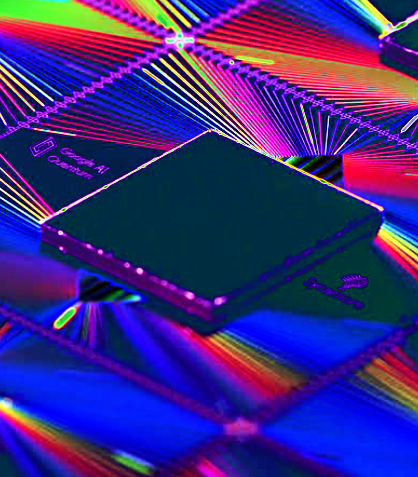Jellybeans drive quantum finds
 Australian engineers have shown that a jellybean-shaped quantum dot creates more breathing space in a packed microchip.
Australian engineers have shown that a jellybean-shaped quantum dot creates more breathing space in a packed microchip.
The silicon microchips of future quantum computers will be crammed with millions, if not billions of qubits - the basic units of quantum information.
With millions of qubits needing millions of wires in the microchip circuitry, it is understandably cramped in there.
But now, engineers at UNSW Sydney have made an important step towards solving a long-standing problem about giving their qubits more breathing space - and it all revolves around jellybeans.
Jellybean quantum dots are elongated areas between qubit pairs that create more space for wiring without interrupting the way the paired qubits interact with each other.
As lead author Associate Professor Arne Laucht explains, the jellybean quantum dot is not a new concept in quantum computing, and has been discussed as a solution to some of the many pathways towards building the world’s first working quantum computer.
“It has been shown in different material systems such as gallium arsenide. But it has not been shown in silicon before,” he says.
Silicon is arguably one of the most important materials in quantum computing, A/Prof Laucht says, as the infrastructure to produce future quantum computing chips is already available, given we use silicon chips in classical computers.
“But because the qubits need to be so close together to share information with one another, placing wires between each pair was always going to be a challenge,” he said.
In a study published today in Advanced Materials, the UNSW team of engineers describe how they showed in the lab that jellybean quantum dots were possible in silicon.
This now opens the way for qubits to be spaced apart to ensure that the wires necessary to connect and control the qubits can be fit in between.
In a standard quantum dot using spin qubits, two qubits need to be placed closely together so their spins can interact with each other to implement a quantum algorithm.
However, moving them apart to create more space for wiring has always been a challenge because the paired qubits would stop interacting.
The solution involves creating a chain of electrons by trapping more electrons between the qubits, acting as a quantum version of a string phone, allowing the two paired qubit electrons at each end of the jellybean to continue to communicate with each other.
The number of extra electrons pulled into the jellybean quantum dot is key to how they arrange themselves and form a continuous and homogeneous jellybean.
More details are accessible here.








 Print
Print